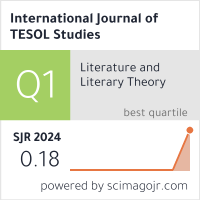2632-6779 (Print)
2633-6898 (Online)


Scopus
Ulrich’s Periodicals Directory (ProQuest)
MLA International Bibliography
MLA Directory of Periodicals
Directory of Open Access Journals (DOAJ)
QOAM (Quality Open Access Market)
British National Bibliography
WAC Clearinghouse Journal Listings
EBSCO Education
ICI Journals Master List
ERIH PLUS
CNKI Scholar
Gale-Cengage
WorldCat
Crossref
Baidu Scholar
British Library
J-Gate
ROAD
BASE
Publons
Google Scholar
Semantic Scholar
ORE Directory
TIRF
China National Center for Philosophy and Social Sciences Documentation
Fei Victor Lim
National Institute of Education, Nanyang Technological University, Singapore
Abstract
The future of TESOL must engage critically with the multimodal turn, acknowledging the shifting landscape of communication in a digital age where meaning-making extends beyond linguistic forms to encompass a range of semiotic resources, such as images, gestures, sounds, and spatial designs. This paper argues for a twofold agenda: augmenting English language learning with multimodality and broadening the scope of literacy education to include multimodal literacy. This involves leveraging multimodal resources not merely as supplementary tools but as integral components of language instruction, thereby enriching learners’ communicative competence in authentic and diverse contexts. The paper calls for a strategic and systemic response from the TESOL community, advocating for research-informed pedagogies, policy frameworks that recognize the importance of multimodal literacy, and targeted professional development for teachers.
Keywords
Multimodality, digital technology, semiotic modes, literacy, multiliteracies